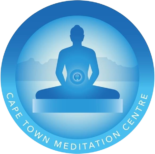Are you feeling overwhelmed by the chaos of daily life? Do you crave a sense of inner calm and balance? If so, you’re not alone. The practice of meditation can offer you a path to tranquility and mindfulness, helping you find your center amidst the hustle and bustle of the world. In this post, we will guide you through the essential steps of meditation, making it accessible for beginners and providing valuable insights for seasoned practitioners.

1. Find Your Sacred Space and Posture
The journey to meditation begins with creating a peaceful environment. Find a quiet place where you won’t be disturbed. Grab a cushion or chair and sit comfortably. The standard posture is to cross your right leg over your left, with your palms facing up, right hand over left hand, and your right index finger lightly touching your left thumb. Keep your back straight but not overly tense. Ensure every part of your body is comfortable to enable you to sit for an extended period without discomfort. Close your eyes gently, as if you’re about to fall asleep, without squeezing your eyelids or pressing your eyeballs. Remember, it’s perfectly fine to adjust or stretch your body during the meditation session if needed. There’s no need to endure any pain.
2. Clear Your Mind
Now that you’re in a comfortable posture, shift your focus to your mind. Let go of all your concerns, whether it’s your loved ones, work, studies, pets, or other distractions. This precious time is reserved for calming your mind. Begin by observing where you feel a sense of comfort. It might not necessarily be extreme happiness, just a gentle relaxation will do. Place, touch, or gently hold your focus on that feeling continuously throughout the session. You can visualize a simple object like a crystal ball, the sun, the moon, or a bubble. Choose something that won’t lead your mind to wander further. Visualize it lightly and gently at your comfort’s position. Alternatively, you can recite a mantra using the comfortable point as the source of your voice. Keep the mantra short and easy, like “clear and bright” or “cool and calm.” You can even combine visualization and mantra recitation. Experiment and see what suits you best.
3. Embrace Strange Experiences
As your mind settles and becomes nearly still, you may experience some unusual sensations. Your body might feel light, as if it’s floating. You might even feel that certain body parts, such as your legs or arms, have disappeared. You might see lights or other phenomena. Whatever happens, continue to keep your mind still. When your mind is completely calm, gently touch toward the center of the mental image that appears, and let yourself sink deeper into it.
4. Taming a Wandering Mind
If your mind starts to wander, don’t fret. It’s a natural part of the process. If your wandering mind becomes hard to control, you can open your eyes and take a minute to look around. When you feel ready, resume meditation. You can use the visualization or mantra recitation techniques to bring your mind back to focus. Once your mind is calm and no longer restless, you can let go of any specific technique and simply let it be. When thoughts arise, don’t be hard on yourself. Instead, employ the techniques mentioned earlier to gently bring your mind back to stillness.
5. Monitor Your Comfort
To ensure you’re on the right track, pay attention to how you feel during meditation. It should always be easy, relaxing, and perhaps bring a little happiness. Your body should remain relaxed as well. Use your body as an indicator—if you find yourself inadvertently squeezing your eyes, tensing your face, or lifting your shoulders, it’s a sign that something’s amiss. Take a break, adjust your body and mind to regain relaxation, and then resume meditation.

6. Building a Routine
For beginners, it’s recommended to start with 5-10 minutes of meditation regularly at the same time each day. Gradually increase your session duration by 5 or 10 minutes until you reach a duration that suits you—whether it’s 45 minutes, an hour, or however long feels right for you. Incorporating yoga into your routine can help stretch your muscles, particularly those in your legs, enabling you to sit comfortably in the standard posture, which is the most stable and balanced position for meditation. However, if you have specific physical conditions, sitting on a chair or sofa is perfectly acceptable. Furthermore, you can incorporate meditation into your daytime routine by cultivating a sense of inner comfort. Even while working, you can engage in this practice. By doing so, you can maintain a consistently serene state of mind. When you meditate, you will find that your mind calms and settles more swiftly.
Incorporate these steps into your daily life, and over time, you’ll find yourself experiencing a greater sense of peace, clarity, and inner harmony through meditation. Remember that meditation is a journey, and every moment you spend in mindfulness is a step closer to a tranquil and balanced life.
![]()


Pingback:World Mental Health Day: Taking Care of Your Well-being
Pingback:The Power of Mindfulness: How Neuroplasticity Shapes Our Brain’s Potential